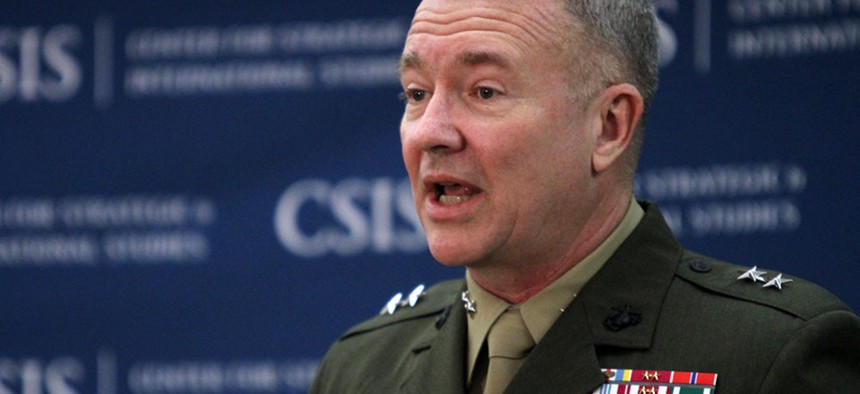Marines Plan Troop Cuts, Command Headquarters Relocations by 2017
Gen. McKenzie cites reduced budget’s risks in preview of quadrennial review.
Budget cuts will force the Marine Corps to trim the “strategy-driven” force design it had envisioned and shift toward reduced troop strength and the elimination of a three-star command headquarters, a key planning officer said on Thursday.
Marine Maj. Gen. Kenneth McKenzie Jr., the Marines’ point man on the Defense Department’s Quadrennial Review being prepared for release in February, said his year-old structure review group had settled on 186,000 as the best troop strength for the Marines, but that the 2011 Budget Control Act required dropping it down to 182,000.
McKenzie spoke at a Navy League breakfast in Arlington, Va., about what to expect in the fifth QDR. “The Marines express our strategy in end strength, in human beings that we deliver to the battlefield, not equipment,” he said. He said the force has averaged around 196,000 since the Vietnam era, but rose to 202,000 for the Afghanistan and Iraq wars. The cut from the current 194,000 troops would be accomplished by 2017, he said, adding under questioning that if sequestration continued, the “lowest risk band” option the Corps could stomach would be 174,000.
That smaller force would require a “1-to-2 dwell force ratio,” assigning Marines to six months of deployment, followed by 12 at home. “We’re the only service that accepts this ratio as a steady state,” McKenzie said. “The young members like it, but the officers who have families don’t.” Reserves would draw down from 39,600 to 38,500 but still be available as a crucial “shock absorber” for the smaller Marine Corps, he added.
The Marines’ probable contribution to the QDR -- which ultimately is the responsibility of the Office of the Defense Secretary -- would also involve cutting tanks and artillery, as well as doing away with a three-star expeditionary force headquarters command currently in Camp LeJeune, N.C., and consolidating it with one East Coast headquarters in Norfolk, Va. The new command would complement an expeditionary task force headquarters in Okinawa, Japan, and one based in Camp Pendleton, Calif., that is deployable anywhere. “That’s a significant change,” he said.
What will be deemphasized, he said, are long-term stabilization activities such as cooperative threat-response exercises with allies.
McKenzie said the Pentagon’s planned pivot to Asia will not be slowed by the new force design, adding that any coming action in the Mediterranean region, such as Syria, can be handled by forward-positioned forces in Spain and Africa. “The coin of the realm” for a Marine Expeditionary unit is that it is forward- deployed, but it can’t be everywhere,” he said. “If we had to go to a major conflict, we’d be all in -- everybody goes, no rotation” and activities elsewhere would not happen.
The controversial F-35 joint fighter jet would remain “a highest priority” on the QDR, he said. “It is on track, and I’m comfortable with the design,” he added. “It is a versatile platform and has a deterrent effect on the enemy.”
McKenzie also backed the amphibious combat vehicle, saying the commandant will soon make decisions on its design, affordability and desirable speed.
“Many think the QDR [has] had marginal impact,” McKenzie said, adding that the Obama administration’s recent internal Strategic Choices and Management Review “ate into some of our time” that should have begun in January. But the coming document will benefit from that earlier work, and will be supplemented 90 days later, he said, by an assessment by the National Defense Panel led by former Defense Secretary William Perry and retired Gen. John Abizaid. Ordinarily, that panel “grades the QDR,” he said, but “this time it will be a parallel effort.”




